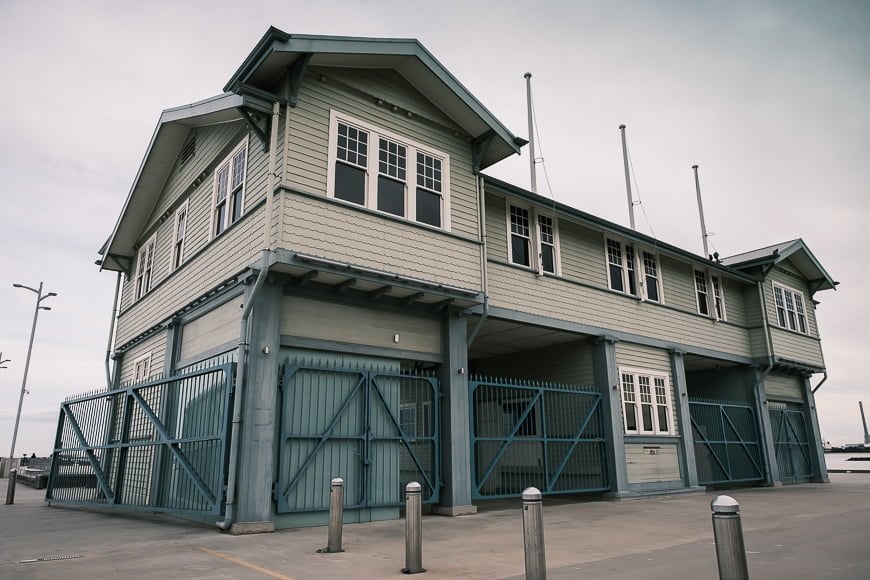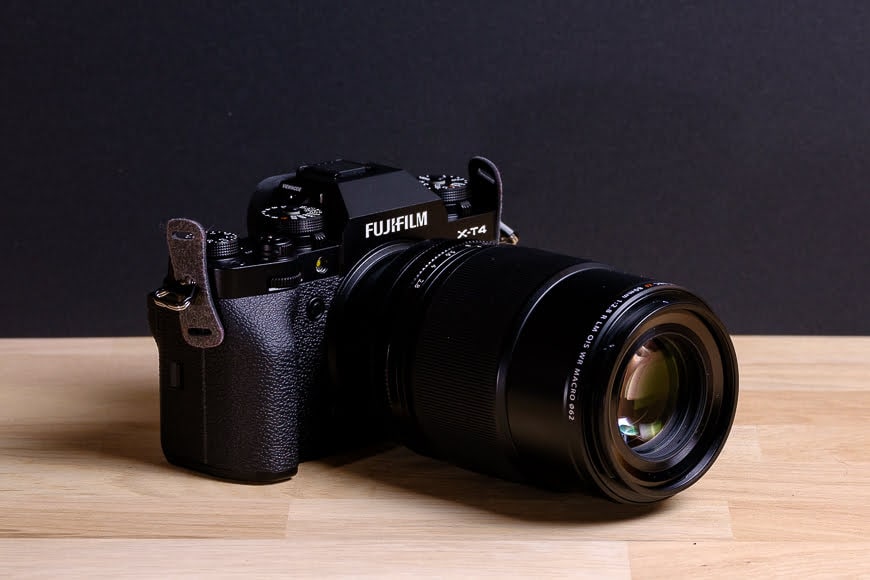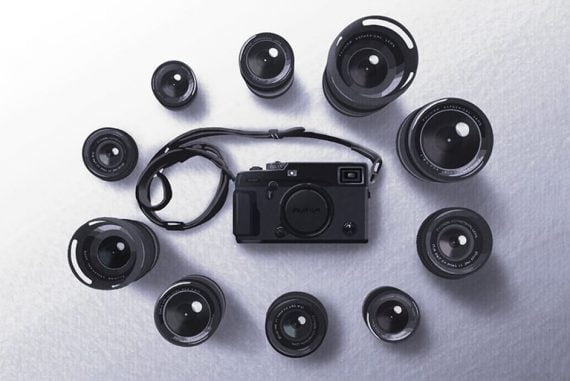
Best Lenses For Fujifilm X-T4 in 2023 (Zoom, Macro, Portrait etc)
If you're lucky enough to own this incredible camera, our guide to the Best Lenses for Fujifilm X-T4 is an essential read! In-depth reviews & recommendations.
We tested all the top X-Series products to find the best Fujifilm X-T4 lenses to include in this guide.
Fortunately, there’s a great range of prime and zoom Fujifilm lenses tailored to meet every photographic genre (see lots more here).
And let’s face it, Fuji makes exceptional glass – I’m yet to come across a Fuji XF lens that I didn’t like.

Compact wide-angle lens that nails the balance between portability, speed and price.
What’s more, Fuji has a road map of future lenses that they regularly update and some of the proposed lenses are worth getting excited about.
The X-T4 inherits the legacy from the brilliant line of X-T cameras – all of which were considered Fuji flagship bodies with a string of awards and accolades.
As a result, you can enjoy a camera with lightning-fast autofocus, amazing image quality, highly customisable functions and class-leading video output.
For now, we’ve put together a carefully curated guide on the best lenses compatible with the Fujifilm X-T4.
This guide is going to cover XF primes and zooms while considering options for the budget conscious and those that want to splash some cash.
(…and if you’re one one of the lucky owners of a Fuji X-T5, these are the lenses you need.)
Table of Contents
Best Fujifilm X-T4 Lenses in 2023
| Image | Product | Features | |
|---|---|---|---|
 | Fujifilm XF 23mm f/2OUR #1 CHOICE |
| Check AMAZON Price → Check MOMENT Price → |
 | Fujifilm XF 16mm f/2.8TOP RATED |
| Check AMAZON Price → Check MOMENT Price → |
 | Fujifilm XF 56mm f/1.2BEST PORTRAIT |
| Check AMAZON Price → Check MOMENT Price → |
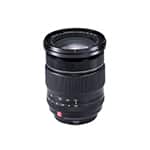 | Fujifilm XF 16-55mm f/2.8MOST VERSATILE |
| Check AMAZON Price → Check MOMENT Price → |
 | Fujifilm XF 50-140mm f/2.8BEST TELEPHOTO |
| Check AMAZON Price → Check MOMENT Price → |
 | Fujifilm XF 80mm f/2.8BEST MACRO |
| Check AMAZON Price → Check MOMENT Price → |
1. Fujifilm XF 23mm f/2
- Razor sharp
- Lightning fast & silent autofocus
- Light and compact
- Excellent low light performance
- Solid and weather-sealed
- Slight softness wide open
I’m going to go out on a limb and say that the more recent range of compact primes are some of the top lenses that Fuji has to offer.
I can already imagine a lot of prime lens purists shouting me down and saying that the older primes are superior. And of course in a lot of ways they may be correct.
A brilliant example of a newer prime lens and certainly one of the best lenses for Fujifilm X-T4 is the XF 23mm f/2.
While there’s an older XF 23mm f/1.4 lens available that’s optically brilliant (see review), it’s slow on the autofocus and can hunt in low light.
Keep in mind that the f/1.4 version is getting on in years now – it was one of the very first Fuji XF primes ever released.
The XF 23mm f/2 is lightning fast – probably one of, if not the fastest of all of Fuji’s lenses when it comes to autofocus.
What’s more, at a very respectable wide aperture of f/2 it’s low light performance is great.
I’ve shot with this lens in the dark and bustling streets of Tokyo and captured sharp images.

Fujifilm XF 23mm f/2 | 1/125SS | 400ISO | f4
When paired with the Fujifilm X-T4 – which has super-fast autofocus and tracking – the chance of you having an out of focus or missed shot is next to none.
From a build perspective, the 23mm f/2 is solid with an all-metal body. It features a focus and aperture ring with textured surfaces for easy grip and sure control.
In addition to this, the lens is weather-sealed thanks to a well-engineered build and the use of rubber seals – when paired with the weather-resistant Fujifilm X-T4 you can endure all sorts of poor weather.
Its operation is completely silent with no hint of focus motor movement – making it brilliant for stealthy street photography.
All of these impressive qualities and features come in a very compact body.
The Fujifilm XF 23mm f/2 is 60mm(2.36″) in diameter by 51.9mm(2.04″) in length and has a filter thread of 43mm – unfortunately, you won’t have much luck finding a filter kit for this one.
In terms of weight, it’s only 180gm(6.34oz) and when paired with the Fujifilm X-T4 has a total weight of 787gm(27.75oz) including battery and memory card.
That’s an amazingly small and lightweight kit that’s perfect for travel, street or just carrying around with you all day.
This is one of my favourite lenses from Fuji and I’ve even carried it in the back pocket of my jeans while shooting with the equally small XF 16mm f/2.8. Imagine being able to carry a second lens without the need for a camera bag!
Alternatively, you could stick with just the XF 23mm f/2 as your always-on-camera lens of choice. 23mm is a natural field of view that’s not so wide that you get distortion and is not so long that you get too much compression.
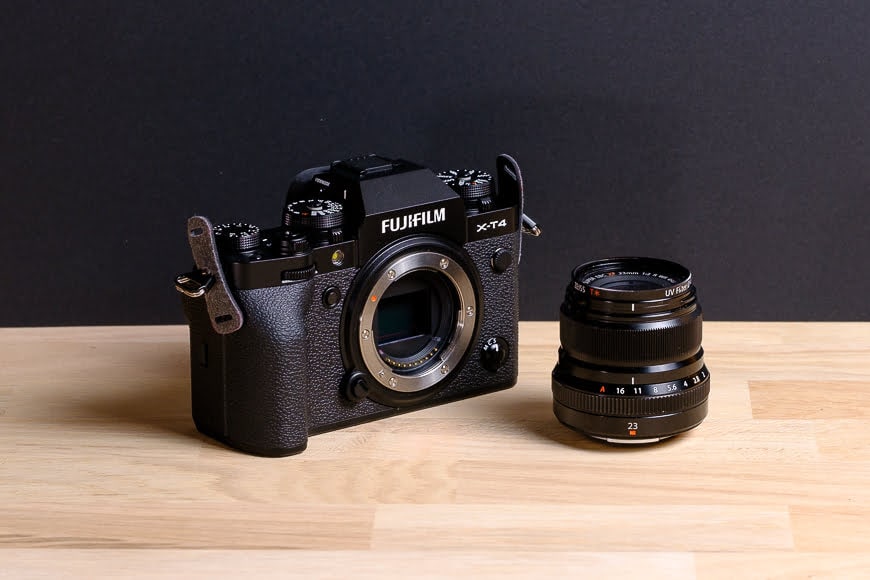
The Fujifilm X-T4 enhances the already lightning-fast autofocus of the XF 23mm f/2.
With this kind of focal length, you can use this lens for street, architecture, events, travel and even portraits with a little more background for context.
The XF 23mm f/2 is a very versatile lens. On a recent trip to Japan, I used it exclusively for my street work – I recall standing in the middle of Shibuya capturing street scenes oblivious to the pouring rain.
Optically, the images produced by this lens are great, with edge-to-edge sharpness especially when stopped down a little to around f/4. The aperture extends to f/16, making it suitable for some long exposure work without a filter.
The 23mm f/2 comes with a strange little mushroom-head of a hood that’s only around 10mm deep – there’s a Fuji aftermarket retro-inspired metal hood that fits both this and the XF 35mm f/2.
All too often when we invest in a new camera and consider a new lens, we are deterred by the additional cost of quality lenses. Fortunately, Fuji has strategically ensured that they offer lenses for every budget.
The Fujifilm XF 23mm f/2 is around $400 for the black version, and a little more for the silver version – the silver is to suit the Fuji cameras with the silver and black finish.
Being able to pick up a high-quality prime lens at such a low price is unbelievable. It’s also a great lens for the Fuji X-E4, the X-Pro 3 and other smaller body X-Series cameras.
What’s more, the 16mm f/2.8, 35mm f/2 and 50mm f/2 are around the same price meaning you could afford to fill your kit with primes in no time.
For a more detailed look at the Fujifilm XF 23mm f/2, you can check out my review here!
2. Fujinon XF 16mm f/2.8
- Robust all-metal body
- Snappy and silent autofocus
- Small and compact
- Great value for money
- No stabilisation
I was thrilled that I was able to cover another one of Fuji’s impressive compact primes – but before I do, let’s take a little history lesson.
One of the very first lenses that Fuji released for their fledgling X-Series back in 2015 was the XF 16mm f/1.4. As a result, it’s the very first Fuji lens that I purchased with my X-T1.
Optically it’s brilliant – arguably one of the sharpest lenses Fujifilm have ever developed. What’s more, its wide f/1.4 aperture, weather sealing and clutch-pull manual focus ring set it apart.
My only gripe as a street and travel photographer was that it was slow on the autofocus and hunted a little too much for focus in poor light.
Recently, Fuji released the latest in its smaller compact primes – the Fujifilm XF 16mm f/2.8 – some videographers call it the best Fuji X-T4 lens for video, but let’s focus on its ability for stills first.
I was eager to get a copy of this lens as I loved the field of view it gave – for street, travel or landscape it’s ideal.
The XF 16mm f/2.8 joins the XF 23mm f/2 we discussed above along with a 35mm and 50mm to round out the compact prime series.
And just like those lenses, this one’s weather-sealed and looks amazing on the Fujifilm X-T4 – there’s something about this combination that screams retro style.
The all-metal body is robust with both an aperture ring that’s smooth and clicky and a focus ring with a nice amount of resistance and travel.
As far as addressing the slower focus of the first 16mm, this new one’s lightning-fast and operates silently – a ninja lens!
It’s by far the smallest of the compact-primes at only 60mm (2.36″) in diameter and 45.4mm (1.8″) in length – 45mm!!! I could probably fit this lens in my mouth!
Ergonomically, the XF16mm f/2.8 is in no way cramped to use or control the aperture and focus ring.
Both are easy to access and feature different size ridges so you can easily differentiate between the two without having to look.
The filter thread is compatible with 49mm filters and the lens – which is available in both black and silver – weighs in at a tiny 155gm(5.46oz). It adds up to a total of 762gm(27oz) when paired with the Fujifilm X-T4.
Such a neat, compact and lightweight kit is absolutely perfect for use as a travel lens or for a daily carry set-up.

In truth, I was tempted to see if I could fit the Fujifilm XF 16mm f/2.8 in my mouth!
As for image quality, I love the sharpness of this lens as it produces images free from softness or any form of distortion.
Even wide open, the Fujifilm XF 16mm f/2.8 delivers good sharpness and no hint of aberration – stop down to f4 and all it will be tack-sharp.
Another great benefit of a lens of this size is that it’s amazingly energy-efficient – having smaller glass and compact motors to drive focus means that the battery is not drained anywhere near as soon.
If you shoot video, you’ll love the freedom of using a fixed wide-angle focal length with such short close-up focusing abilities like this 16mm – this lens really is popular on the X-T4 for video:
In terms of cost, the Fujifilm XF 16mm f/2.8 will set you back $400 or so.
It’s hard to believe that such a highly capable lens is so affordable, and how well it operates when paired with the latest Fuji flagship body.
I don’t know how Fuji do it but I am not about to complain!
For a fraction of the cost of most lenses (any brand), you are getting a lens that’s very versatile, compact, weather-sealed and quite frankly one of the fastest focusing lenses you will ever experience.
If you have just invested in a Fujifilm X-T4 and are looking for the top lenses, then you are going to need a great wide-angle prime to complement the camera. This is our top pick – the Fujifilm XF 16mm f/2.8.
In case you want to check out more about what I have to say on this lens, you can check out my review here.
3. Fujifilm XF 56mm f/1.2
- Exceptional image quality
- Beautiful bokeh
- Solid build
- Distortion is minimal
- Slower autofocus
- Can hunt in low light
The next prime lens that we are going to cover today is considered to be one of the best Fuji lenses for its use in portraiture.
It makes perfect sense to put the Fujifilm X-T4 to work as a brilliant portrait camera either out in the wild or in a studio setting. Regardless, you are going to need to invest in a decent portrait lens with a wide aperture and dreamy, creamy bokeh.
Fortunately, the gang at Fuji have the Fujifilm XF 56mm f/1.2 – a go-to lens for Fuji portrait shooters.
What’s more, it delivers exceptional image quality thanks to its glass configuration and use of an aspherical element.
As a result, the subject separation and background effects (aka bokeh) are wonderful and appealing.
Being a larger and older lens from Fuji, the focusing system is not as quick as some of the newer compact primes we’ve covered here in this article. However, it does focus quickly in good light with only a small lag in grabbing focus.
However, in lower light, despite its wide aperture and ability to pull in lots of light, it can get stuck in a hunting pattern.

Fujifilm XF 56mm f/1.2 | 1/500SS | 250ISO | f2
This is not really a lens for activities such as street and motorsport photography – there are better lenses for that so keep reading.
It’s a lens for setting up a composition and taking a shot that does not require split-second reflexes from both the photographer and the lens.
When paired with the highly capable Fujifilm X-T4, the 56mm is a brilliant lens for portraits – it delivers a nice compressed field of view that can really contain your composition and story, while throwing the background of of focus to separate your subject.
The Fujifilm XF 56mm f/1.2 is a solid lens that’s all metal and has quite a decent handful of weight to it.
In the blue corner, weighing in at 405gm(14.28oz), all the way from the Land of The Rising Sun, we’ve got the Fuji…XF…56mm f/1.2!
It’s a bigger, beefier lens than the little compacts we’ve covered so far. With a diameter of 73.2mm (2.88″) and a length of 69.7mm (2.74″), it’s a decent size for a prime. The lens uses a filter thread of 62mm making it easy to find suitable screw-on filters or filter mounts.
The aperture ring has a nice clicky glide from 1.2 to 16 without being too loose. Equally, the manual focus ring has a nice amount of travel and resistance plus it’s a broad, ridged ring making it comfortable to use in manual.
When paired with the Fujifilm X-T4, the kit feels solid and well balanced. Where I didn’t even notice the compact primes attached to the X-T4, I can certainly tell that the 56mm is attached.
That’s not a criticism as there’s a great deal of comfort and confidence in such a well balanced and meaty kit.
The lens hood is deep and almost as long as the lens ensuring that you have control of the amount of light hitting the front element.

The XF 56mm f/1.2 produces wonderful image quality with creamy background effects.
An important point to note is that this is the first of two almost identical lenses produced by Fuji. The lens we are discussing here was actually released back in 2014 – great to know that it was ahead of its time as its performance hasn’t diminished.
Fuji then released an APD version of the same lens with the inclusion of an apodization filter. This is a clear internal filter that’s graded to get darker towards its edges – the result is nicer bokeh and that’s about it.
For me, the image quality and the bokeh from the original 56mm is amazing and certainly not worth paying an extra $500 just to get a small improvement.
It’s a move by Fuji that I still don’t understand – if anything the autofocus is a little slower in the APD version – silly they didn’t take the opportunity to clean that up at the time.
As for the Fujifilm XF 56mm f/1.2 that we are covering here, you can pick up a copy for around $1,000.
For that amount, you are getting one of Fuji’s premium prime lenses that will reward your investment with outstanding image quality.
If you are keen to put your Fujifilm X-T4 to good use as a portrait shooter, then the Fujifilm XF 56mm f/1.2 is going to rock your world.
4. Fujifilm XF 16-55mm f/2.8
- Ultra versatile
- Solid build
- Fast autofocus
- Beatuiful contrast and sharp details
- Some edge softness when zoomed out
- No image stabilisation
While I’ve had the good fortune to have shot with and or owned almost every Fuji lens, there are a couple that I’ve not had the pleasure to test out.
Lucky for me that in reviewing the best Fuji lenses for the X-T4, I got my hands on a lens I was dying to play with – the Fujifilm XF 16-55mm f/2.8.
Given I am mostly a prime shooter I’d not previously taken the time to give this lens a go. What a mistake that was!
The 16-55mm is a premium red badge XF zoom lens meaning that Fuji has branded it as something rather special.
Keep in mind that the Fuji standard kit lens is the XF 18-55mm f/2.8-4 which has been applauded as one of the best kit lenses available from any camera brand.
It has enjoyed a long and prosperous life as a great multi-purpose lens that’s affordable to all.
Along came the 16-55mm with a similar zoom range to provide photographers with a ‘next-level’ product offering.
Like the kit lens, this one’s got a fantastic focal range that makes it incredibly versatile – this would be a brilliant lens for travel, whether going to the country for some landscape or the city for some architecture.
16mm is a nice wide-angle that provides ample context to your composition without any unnecessary distortion. The 55mm end makes it possible to also use this lens for portrait photography.
Either way, the lens looks great on the Fujifilm X-T4 and thanks to weather sealing, it makes a great outdoor kit built for the elements.
The Fujifilm XF 16-55mm f/2.8 has a constant f/2.8 aperture as found with the XF 50-140mm f/2.8, another red badge zoom. If you had both of these lenses you would pretty much have a complete kit to work with your Fuji X-T4.
The lens is heavy, solidly built and has an all-metal body that weighs 655gm(23.1oz) creating a combined weight of 1.3kg(2.86lbs). While we are now over the 1kg mark this is still a reasonable weight for a premium lens and camera kit.
The aperture ring is metal and has the usual ridged surface and a nice amount of clicking resistance when dialed.
Equally, the focus ring is metal and has a much finer amount of surface texture plus a nice amount of resistance and glide.
Finally, the zoom ring is broader and has a ridged-rubber coating for improved comfort.
I like how Fuji has differentiated each of the rings with different sizes and surfaces so you could almost shoot blind and still know which ring was which.
The minimal zoom extension is external – unlike the XF 50-140mm f/2.8 where the zoom travel is internal.
Also, there’s a good amount of tension and resistance in the zoom mechanism so that the zoom doesn’t extend or collapse without you wanting it to.
As you would expect from a premium lens, the autofocus is fast and when paired with the Fujifilm X-T4, the combined focus system is brilliant. In low light, there’s no sign of focus hunting or breathing.
As for the image quality, it produces sharp details and accurate contrast – my only real gripe is that Fuji hasn’t included IOS when designing this lens.
When zoomed out to 55mm, the lens should be stopped down just a little to remove any edge softness that may appear.
In terms of price, the Fujifilm XF 16-55mm f/2.8 is going to set you back around $900.
For that price, you are not only getting one of Fuji’s premium zooms but also a lens that’s optically brilliant, versatile and built to last a lifetime.
If you are looking for the most versatile zoom lens for your new Fujifilm X-T4, the XF 16-55mm f/2.8 is hard to pass up.
For a more detailed look, you can check out our review here.
5. Fujifilm XF 50-140mm f/2.8
- Solid, all-metal build
- Lightning fast focusing
- Optical Image Stabilisation (OIS)
- Edge-to-edge sharpness
- Heavy
- Not cheap
I recently had the opportunity to review what I consider one of my all-time favourite lenses – this one really is in a class of its own.
The Fujifilm XF 50-140mm f/2.8 is as close to perfect as I could possibly hope for a telephoto zoom. In fact, I am going to go a step further and say it IS perfect!
It’s the kind of lens that once you drop it onto your Fujifilm X-T4, you are not likely to take it off for a very long time. You are just going to spend day and night testing out this dream combo on anything you can spot.
Stay tuned for my full-length review but in the interim, I want to cover some of the key reasons I class this as a brilliant lens that’s more than worthy of your money.
Starting with the build quality, the XF 50-140mm f/2.8 is built like a tank thanks to an all-metal body, metal-alloy foot and rugged design.
In most cases, the Fujifilm X-T4 outweighs a lot of the lenses we’ve covered her. In this case, the lens supports the camera and with the tripod mount attached, the camera sits suspended – held up by the might of the lens.
The tripod mount is solid and acts as a carry handle – you can actually remove the mount and also unlock it to spin the whole lens with the camera attached.
On its own, it weighs 995gm(2.18lbs) and its diameter and length are 82.9mm(3.26″) by 175.9mm(6.92″).
The front element is a big gorgeous disc of glass that pulls in all that light especially wide open at f/2.8. The zoom function operates internally so there’s no extension mechanism adding to the weather sealing of this lens.
With a lens like this, you are going to need two hands to shoot more so than ever – no point putting undue pressure on the camera/lens mount.
As with all Fuji lenses, there’s a dedicated ridged-aperture ring with a nice level of resistance and that wonderful soft clicking feedback. The Focus ring is also ridged but with a much finer grade ensuring a good grip and control.
Finally, the zoom ring is broad and has a ridged-rubber coating to ensure optimal control – you can almost put your whole hand around this ring.
Remember how I made the claim that this is a perfect lens? Well the Fuji XF 50-140mm f/2.8 not only looks great, but it’s the best performing lens I’ve had the pleasure of shooting with.
The focusing system is lightning fast – the internal motors that push and pull focus are moving huge amounts of glass. What’s more, the focusing is just as zippy and sticky in low light situations – thanks also to the Optical Image Stabilisation (OIS) built into the lens.
When paired with the Fujifilm X-T4, it’s an impressive combination for guaranteed tracking of moving subjects along with eye and face detection.
In terms of image quality, the 50-140mm produces amazingly sharp images with edge-to-edge sharpness at both ends of the focus range.
If you were looking at a single, versatile lens for your Fujifilm X-T4 – and you wanted to dabble in a lot of different genres – the Fujifilm XF 50-140mm f/2.8 is without a doubt the best lens for the job.
It’s a lot like one of those ‘if you were stuck on a deserted island and could only have one lens’ scenarios.
With a lens like this, you could take gorgeous shots of the horizon line, gulls passing by and spot that message in a bottle out at sea.
You can pick up a copy of this lens for around $1,300 – for that, you are getting both a premium Fuji XF Zoom and also one of the best lenses on the market!
6. Fujinon XF 80mm f/2.8 Macro
- Sharp, detailed images
- 1:1 macro magnification
- Silent operation
- Optical Image Stabilisation (OIS)
- Big and heavy
- A bit pricey
This final one in our guide to the best lenses for Fujifilm X-T4 almost didn’t make the cut.
Not because it was a poor choice, but it was a late arrival to my home studio. Boy am I glad I decided to take the time to have a play and include it here for your consideration.
The lens in question is the Fujifilm XF 80mm f/2.8 Macro – have you noticed that there are a lot of f/2 and f/2.8 lenses in our line-up?
Fuji released a 1:2 macro very early on in the game with the XF 60mm f/4 Macro – it’s still an amazing lens that’s super sharp and also ideal for portraits.
But at the end of the day, it was a 1:2 macro lens and not a true 1:1 that a lot of photographers were desiring.
When Fuji released the XF 80mm a lot of my photography friends that love macro were thrilled – not only was it overdue, but it turned out to be an amazing lens.

Fujifilm XF 80mm f/2.8 Macro | 1/500SS | 800ISO | f8
I dropped this bad-boy onto the X-T4 and headed out to my local gardens for a little bug-hunt.
It was a cold Melbourne morning but the sun was peeking through the foliage and the bees were making the most of the opportunity – so did I.
The Fuji XF 80mm is an incredibly capable macro lens – the images from this lens are so sharp and detailed.
What’s more, the autofocus system is zippy-quick making it perfect for its intended purpose – being able to capture the hairs on a bee’s back while it lands on a flower that’s swaying in the breeze is no easy task.
The lens operates silently and when mounted to the Fujifilm X-T4 you can make the most of that blistering FPS during continuous high shooting.
Thanks to the f/2.8 to f/22 aperture range, you have ample play-room for reducing the thin focal plane via a narrow aperture or a wide aperture with focus stacking.

The Fujifilm XF 80mm f2.8 Macro is a well built and super-fast lens.
The 80mm Macro features both an OIS switch and a distance limiter switch on the side of the barrel.
The distance limiter allows for full shooting from the minimum focus distance of 0.25m to infinity. But you can also select either 0.5m – Infinity or within 0.25m – 0.5m.
Being an 80mm, you have a lot more working distance between the front of your lens and the subject – although the lens hood is half as long as the lens and comes pretty close to disturbing your subjects.
Speaking of dimensions, the Fujifilm XF 80mm f/2.8 Macro is 130mm(5.11″) in length with a barrel diameter of 80mm(3.15″) – the filter thread is 62mm and the lens hood is 80mm long.
The lens weighs 750gm(26.45oz) and when combined with the Fuji X-T4 is a well-balanced kit – I was able to comfortably handhold the combo while out shooting for a bit.
I love the look of Fuji lenses and the 80mm Macro is no exception to that. With an all-metal body, ridged aperture ring and a broad rubber focus ring you have full control of your shooting experience.
Plus it’s weather-sealed so, along with your X-T4, you can shoot snails in the rain.
The Fuji 80mm retails for around $1,200 and for a specialist lens that’s fantastic value for money.
But wait there’s more as the 80mm is a perfect focal distance for portrait shots and you will soon learn that this is likely the sharpest portrait lens you have ever experienced.
This level of flexibility is always appreciated in any lens as you get more bang for your buck.
Final Words

The Fujifilm XF Lens Dream Team!
In buying the Fujifilm X-T4, you have invested in one of the best mirrorless APS-C cameras available here in 2023.
Fujifilm doesn’t hold back on its releases and this camera is testament to that, with its incredible tech capabilities and enhancements.
Well done you on making a brilliant and guilt-free decision! Your next move is to pick up some of the amazing Fuji lenses available for every genre of photography.
If you are a street photographer, then I recommend grabbing either the Fujifilm XF 16mm f/2.8 or the XF 23mm f/2 – the latter is one of my personal favourites.
Alternatively, if you shoot weddings and events – once the isolation period is over – then do yourself and your clients a favour and invest in the XF 50-140mm f/2.8.
These are just a couple of examples of how you can pair up the powerful Fujifilm X-T4 with the best lenses Fuji has to offer.
I’ve listed a number of the best lenses here in this guide, but there are plenty more where that came from.
If you have questions about other lenses, please leave them in the comments below and I will be sure to reply.
At the end of the day, no matter what lens choices you make, you cannot go wrong with Fujifilm, who are masters at lens design, development and production.
You will find yourself reluctant to put your Fuji X-T-4 down once you start playing with such a capable and comprehensive lens collection. Enjoy!

Compact wide-angle lens that nails the balance between portability, speed and price.









